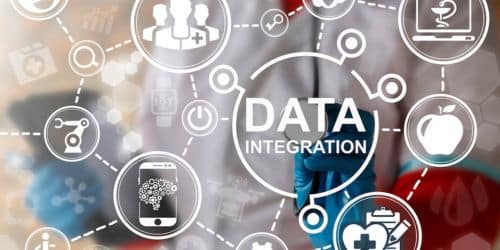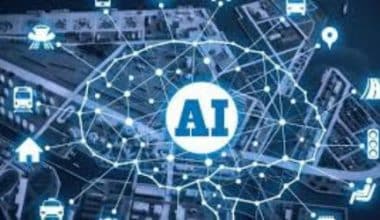Data is an organization’s most important asset. 66 percent of firms still lack a consistent, centralized strategy for data quality, despite the fact that it is critical for making critical business choices. The issue with data silos is that data is dispersed across multiple systems. As a result, a collaboration between departments, procedures, and systems suffers. Accessing a single activity or report without data integration would require logging into various accounts or locations across different platforms. Furthermore, incorrect data processing can have devastating consequences for organizations.
What is Data Integration?
Data integration is the practice of combining data from various sources into a single dataset with the ultimate goal of providing users with consistent access and delivery of data across a wide range of subjects and structure types, as well as meeting the information requirements of all applications and business processes.
The data integration process is one of the most important components of the total data management process, and it is being used more frequently as big data integration and the need to share existing data become more common.
Data integration architects create data integration tools and platforms that enable an automated data integration process for linking and routing data from source systems to target systems. This can be accomplished using a variety of data integration techniques, such as:
- Extract, Transform, and Load: copies of datasets from various sources are collected, harmonized, and loaded into a data warehouse or database. Data is extracted, loaded, and translated into a big data system before being altered for specific analytics purposes.
- Change Data Capture: detects real-time data changes in databases and applies them to a data warehouse or other repositories.
- Data Virtualization: rather than loading data into a new repository, data from different systems is virtually integrated to produce a unified perspective.
- Data Replication: Data in one database is replicated in other databases to maintain the information synced for operational and backup purposes.
- Streaming Data Integration: a real-time data integration method that continually integrates and feeds multiple streams of data into analytics systems and data repositories.
What is Big Data Integration?
Big data integration refers to advanced data integration processes that combine data from sources such as web data, social media, machine-generated data, and data from the Internet of Things (IoT) into a single framework in order to manage the enormous volume, variety, and velocity of big data.
Big data analytics solutions necessitate scalability and high performance, highlighting the need for a standard data integration platform that enables the profiling and data quality and promotes insights by presenting the user with the most complete and up-to-date perspective of their organization.
Real-time integration techniques are used in big data integration services to supplement traditional ETL technologies and offer dynamic context to continually streaming data. Best practices for real-time data integration address its dirty, moving, and temporal nature by requiring more stimulation and testing upfront, adopting real-time systems and applications, users implementing parallel and coordinated ingestion engines, establishing resiliency in each phase of the pipeline in anticipation of component failure, and standardizing data sources with APIs for better insights.
Data Integration vs. Application Integration
Data integration solutions were developed in response to the widespread use of relational databases and the growing requirement to transmit information across them effectively, often involving data at rest. Application integration, on the other hand, controls the real-time integration of actual, operational data between two or more applications.
The ultimate goal of application integration is to enable independently designed applications to work together, which necessitates data consistency between separate copies of data, management of the integrated flow of multiple tasks executed by disparate applications, and, similarly to data integration requirements, a single user interface or service from which to access data and functionality from independently designed applications.
Cloud data integration is a typical technique for accomplishing application integration. It refers to a system of tools and technology that integrates numerous applications for real-time data and process exchange and offers access by multiple devices over a network or the internet.
Why Is Data Integration Important?
Businesses that want to stay competitive and relevant are embracing big data, with all of its benefits and pitfalls. Data integration enables searches in these massive databases, resulting in benefits ranging from corporate intelligence and consumer data analytics to data enrichment and real-time information delivery.
The management of corporate and consumer data is a key use case for data integration services and solutions. To provide enterprise reporting, business intelligence (BI data integration), and sophisticated enterprise analytics, enterprise data integration feeds integrated data into data warehouses or virtual data integration architecture.
Customer data integration offers key performance indicators (KPIs), financial risks, customers, manufacturing and supply chain operations, regulatory compliance activities, and other aspects of business processes to business managers and data analysts.
Data integration is particularly critical in the healthcare industry. By arranging data from disparate systems into a single perspective of relevant information from which helpful insights can be derived, integrated data from different patient records and clinics assist clinicians in identifying medical ailments and diseases. Effective data gathering and integration also enhances medical insurance claims processing accuracy and provides a consistent and accurate record of patient names and contact information. Interoperability refers to the sharing of information between different systems.
Five Methods for Data Integration
Implement data integration, there are five different ways, or patterns: ETL, ELT, streaming, application integration (API), and data virtualization. Data engineers, architects, and developers can either manually design an architecture using SQL to perform these procedures, or they can set up and administer a data integration tool, which accelerates development and automates the system.
The diagram below depicts where they fit into a modern data management process, transforming raw data into clean, business-ready data.
The following are the five basic ways of data integration:
#1. ETL
An ETL pipeline is a conventional sort of data pipeline that uses three processes to convert raw data to match the target system: extract, transform, and load. Before being put into the destination repository (usually a data warehouse), data is converted into a staging area. This enables rapid and accurate data processing in the target system and is best suited for small datasets requiring sophisticated changes.
Change data capture (CDC) is an ETL approach that refers to the process or technology for identifying and collecting database changes. These modifications can subsequently be deployed to another data repository or made available in a format that ETL, EAI, or other types of data integration tools can consume.
#2. ELT
The data is immediately loaded and converted within the target system, which is generally a cloud-based data lake, data warehouse, or data lakehouse, in the more current ELT pipeline. Because loading is frequently faster, this strategy is more appropriate when datasets are huge and timeliness is critical. ELT works on a micro-batch or changes data capture (CDC) period. Micro-batch, also known as “delta load,” only loads data that has been modified since the last successful load. CDC, on the other hand, continuously loads data from the source as it changes.
#3. Data Streaming
Rather than putting data into a new repository in batches, streaming data integration transports data from source to target in real time. Data integration (DI) solutions that are modern can transfer analytics-ready data into streaming and cloud platforms, data warehouses, and data lakes.
#4. Application Integration
Application integration (API) allows different programs to communicate with one another by moving and synchronizing data across them. The most common use case is to support operational needs, such as ensuring that your HR system and financial system have the same data. As a result, the application integration must ensure consistency between data sets.
Furthermore, these diverse applications typically have their own APIs for sending and receiving data, so SaaS application automation tools can assist you in creating and maintaining native API integrations easily and at scale.
#5. Data Virtualization
Data virtualization, like streaming, gives data in real-time, but only when a user or application requests it. Nonetheless, by virtually merging data from multiple systems, can produce a unified view of data and make data available on demand. Virtualization and streaming are ideal for transactional systems designed to handle high-performance requests.
Each of these five ways is evolving in tandem with the surrounding ecosystem. Because data warehouses were historically the target repository, data had to be modified before loading. This is the traditional ETL data pipeline (Extract > Transform > Load), and it is still suitable for modest datasets requiring extensive transformations.
However, as current cloud architectures, larger datasets, data fabric and data mesh designs, and the requirement to support real-time analytics and machine learning projects proliferate, data integration is evolving away from ETL and toward ELT, streaming, and API.
Important Data Integration Use Cases
The four key use cases will be discussed in this section: data ingestion, data replication, data warehouse automation, and big data integration.
#1. Data Ingestion
Data ingestion is the process of transferring data from many sources to a storage location such as a data warehouse or data lake. Ingestion can be done in real-time or in batches, and it usually includes cleaning and standardizing the data so that it is ready for analysis by a data analytics tool. Migrating your data to the cloud or constructing a data warehouse, data lake, or data lakehouse are examples of data intake.
#2. Data Replication
Data replication is the process of copying and moving data from one system to another, such as from a database in the data center to a data warehouse on the cloud. This guarantees that the right data is backed up and synchronized with operational needs. Replication can take place in bulk, in scheduled batches, or in real-time across data centers and/or the cloud.
#3. Data Warehouses Automation
By automating the data warehouse lifecycle—from data modeling and real-time ingestion through data marts and governance—the process speeds the availability of analytics-ready data. This diagram depicts the major processes of automated and continual refining in the establishment and operation of a data warehouse.
#4. Big Data Integration
The immense volume, diversity, and velocity of structured, semi-structured, and unstructured data connected with big data necessitate the use of advanced tools and techniques. The goal is to deliver a thorough and up-to-date view of your business to your big data analytics tools and other applications.
This implies that your big data integration solution needs sophisticated big data pipelines capable of autonomously moving, consolidating, and transforming big data from different data sources while retaining lineage. To handle real-time, continually streaming data, it must have excellent scalability, performance, profiling, and data quality characteristics.
Benefits of Data Integration
Finally, data integration allows you to assess and act on a trustworthy, single source of controlled data that you can rely on. Large and sophisticated datasets from many distinct and unconnected sources—ad platforms, CRM systems, marketing automation, web analytics, financial systems, partner data, even real-time sources and IoT—are inundating organizations. And, unless analysts or data engineers spend numerous hours generating data for each report, all of this data cannot be linked together to create a holistic picture of your company.
Data integration connects various data silos and delivers a dependable, centralized source of controlled data that is complete, accurate, and up to date. This enables analysts, data scientists, and businessmen to use BI and analytics tools to examine and analyze the entire dataset for trends, resulting in actionable insights that improve performance.
Here are three major benefits of data integration:
Increased accuracy and trust: You and other stakeholders will no longer have to worry if KPI from which tool is correct or whether specific data has been included. There will also be considerably fewer errors and rework. Data integration provides a dependable, centralized source of correct, controlled data that you can rely on: “one source of truth.”
More data-driven and collaborative decision-making: Once raw data and data silos have been transformed into accessible, analytics-ready information, users from throughout your business are significantly more likely to engage in analysis. They are also more likely to collaborate across departments because data from all parts of the company is pooled and they can easily see how their actions affect one another.
Increased efficiency: When analysts, development, and IT teams aren’t spending time manually gathering and preparing data or constructing one-off connections and custom reports, they can focus on more strategic objectives.
Data Integration Challenges
Taking multiple data sources and combining them into a single structure is a technical problem in and of itself. As more businesses develop data integration solutions, they are charged with developing pre-built processes for transferring data reliably where it needs to go. While this saves time and money in the short term, implementation can be hampered by a variety of challenges.
Here are some of the most prevalent issues that organizations confront while developing integration systems:
- How to Get to the Finish Line — Most businesses know what they want from data integration – a solution to a specific problem. What they frequently overlook is the journey that will be required to get there. Anyone responsible for implementing data integration must understand what categories of data must be collected and processed, where that data comes from, the systems that will use the data, what types of analysis will be performed, and how frequently data and reports must be updated.
- Data from legacy systems – Integration efforts may include the inclusion of data from legacy systems. That data, however, frequently lacks indicators such as times and dates for activities, which are commonly included in more recent systems.
- Data from emerging business demands – Today’s systems generate various types of data (such as unstructured or real-time) from a variety of sources, including movies, IoT devices, sensors, and the cloud. Figuring out how to swiftly change your data integration infrastructure to match the needs of integrating all of these data becomes crucial for your business to win, but it is exceedingly challenging due to the volume, pace, and new data format all posing new issues.
Read also: HORIZONTAL INTEGRATION: Detailed Guide To The Strategy
- External data – Data obtained from external sources may not be as detailed as data obtained from internal sources, making it harder to review with the same thoroughness. Furthermore, partnerships with external providers may make data sharing throughout the firm challenging.
- Keeping up — The job isn’t over once an integration system is up and operating. It falls on the data team to keep data integration efforts up to date with best practices and the most recent requests from the company and regulatory bodies.
Data Integration Techniques
There are five major types of data integration techniques. The advantages and disadvantages of each, as well as when to utilize them, are listed below:
#1. Manual Data Integration
Manual data integration is the process of manually integrating all of the many data sources. This is typically done by data managers through the use of custom code and is an excellent method for one-time events.
Pros:
- Cost-cutting measures
- More liberty
Cons:
- Greater margin for mistake
- Scaling is difficult.
#2. Middleware Data Integration
Middleware or software is used in this type of data integration to connect applications and send data to databases. It is extremely useful for combining legacy systems with modern ones.
Pros:
- Improved data streaming
- Access between systems is much easier.
Cons:
- Fewer opportunities
- Functionality is limited.
#3. Application Integration
This strategy relies entirely on software applications to seek, retrieve, and integrate data from many sources and systems. This method is ideal for companies that operate in hybrid cloud environments.
Pros:
- Simplified information exchange
- Process Streamlining
Cons:
- Restricted access
- Inconsistent outcomes
- The setup is complicated.
#4. Uniform Access Integration
This method combines data from several sources and presents it uniformly. Another advantageous characteristic of this method is that it allows the data to remain in its original position while performing this function. This method is ideal for enterprises that require access to different, diverse systems without incurring the cost of creating a copy of the data.
Pros:
- Storage requirements are minimal.
- Simpler access
- Data visualization sped up
Cons:
- System constraints
- Data integrity issues
#5. Shared Storage Integration
This method is similar to uniform access integration, except that it makes a data warehouse replica of the data. This is unquestionably the greatest way for firms looking to maximize the value of their data.
Pros:
- Version control has been strengthened.
- burden reduction
- Improved data analytics
- Streamlining Data
Cons:
Expensive storage
High operating expenses
Data Integration Tools
There are various data integration tools for various data integration methodologies. A decent integration tool should have the following features: portability, simplicity, and cloud compatibility. Here are a few of the most common data integration tools:
- ArcESB
- Xplenty
- Automate.io
- DataDeck
- Panoply
Conclusion
To suggest that data integration allows businesses to have all of their information in one place is an understatement. It is, in fact, the first and most important step that enterprises must take in order to realize their full potential. It is difficult to imagine the many benefits of this topic unless you go deeply into it.
- DATA MANAGEMENT: Tools For Effective Data Management
- Best Data Management Software For Your Small Business In 2023
- DATA ENGINEER: Skill Requirement And 2023 Salary
- MASTER DATA MANAGEMENT TOOLS: Best Data Management Tools
- DATA CLEANSING: Best Practices For The Cleaning Process






